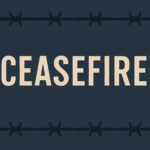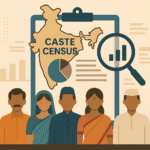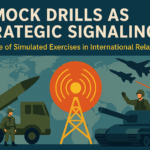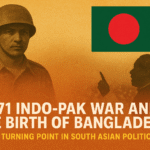The India-Pakistan ceasefires stand significant in international relations, highlighting the fragile peace between two nuclear-armed states and underscoring the urgent global stakes of conflict de-escalation in South Asia. The history of India-Pakistan relations has been marked by recurring cycles of conflict and temporary peace. Since the partition of British India in 1947, both nations have fought four wars and experienced numerous ceasefire violations along their disputed borders. This article examines the major ceasefires between these nuclear neighbors, their violations, and the humanitarian impact on border populations.
The First War and UN-Mediated India Pakistan Ceasefires (1947-1949)
The first India-Pakistan war erupted in October 1947, just months after independence, when Pakistani tribal militias invaded Kashmir. The conflict ended with a UN-brokered ceasefire that took effect on January 1, 1949, leaving Kashmir divided. The Karachi Agreement of July 1949 formally established an 830-km Cease-Fire Line (CFL) monitored by the UN Military Observer Group in India and Pakistan (UNMOGIP).
This ceasefire froze the front lines, with Pakistan controlling roughly one-third of Kashmir (later called Azad Kashmir and Gilgit-Baltistan) and India controlling the rest, including the Kashmir Valley and Jammu. Though UNMOGIP continued monitoring the CFL through the 1950s and 1960s, the political stalemate over Kashmir’s status remained unresolved.
The humanitarian toll was severe – the war and preceding Partition saw 14 million people displaced and hundreds of thousands killed in communal violence. In the Jammu region alone, tens of thousands of Muslims and Hindus were killed or expelled in 1947-48.
Operation Gibraltar and the Tashkent Agreement (1965-1966)
The 1949 ceasefire largely held until 1965, when Pakistan launched Operation Gibraltar – a covert mission to infiltrate Jammu and Kashmir and foment insurgency against Indian rule. This provocation quickly escalated into a full-scale war extending beyond Kashmir into Punjab and Rajasthan. The conflict saw some of the largest tank battles since World War II.
After 17 days of intense fighting with thousands of casualties, the UN Security Council passed Resolution 211 demanding an immediate ceasefire, which took effect on September 22, 1965. To formalize the peace, Soviet-mediated negotiations led to the Tashkent Declaration in January 1966, where both sides agreed to withdraw to pre-war positions and restore diplomatic relations.
The conflict began with Pakistan’s attempt to alter the status quo through infiltration. The war caused thousands of civilian displacements in border areas, with cities like Lahore and Amritsar bombed. Villagers returned home after the ceasefire to find farms and homes destroyed, with unexploded ordnance creating ongoing dangers.
The Bangladesh War and Simla Agreement (1971-1972)
The third war erupted in 1971 when India intervened in East Pakistan’s fight for independence following a brutal Pakistani military crackdown that caused around 10 million refugees to flee to India. The two-week war ended with Pakistan’s decisive defeat and the birth of Bangladesh.
A ceasefire on the western front took effect on December 17, 1971. This led to the landmark Simla Agreement of July 1972, which converted the old CFL into the Line of Control (LoC), to be respected by both sides and not altered by force. Crucially, both nations agreed to resolve disputes bilaterally without third-party mediation.
The humanitarian impact was catastrophic – estimates suggest between tens of thousands of Bengali civilians were killed in what many consider a genocide, creating one of the largest refugee crises of the 20th century. The Simla Agreement facilitated the repatriation of 93,000 Pakistani POWs and normalized relations, but separated families along the new borders continued to suffer.
Between Wars: Siachen and Kashmir Insurgency (1984-1998)
The Simla Agreement’s LoC became the new flashpoint. A significant breach occurred in 1984 when India launched Operation Meghdoot, seizing key peaks in the Siachen Glacier – exploiting the fact that the ceasefire line had not been properly demarcated beyond point NJ9842. Pakistan responded, and Siachen became the world’s highest battleground, with large number of soldiers dying mostly from harsh conditions.
In 1989, a Pakistan-backed insurgency erupted in Kashmir against Indian rule. Pakistan’s support for militant groups, including providing covering fire for cross-border infiltration, led to routine ceasefire violations throughout the 1990s. The LoC became an active conflict zone with regular exchanges of fire.
The insurgency and counterinsurgency claimed over 50,000 lives by the 2000s, mostly Kashmiri civilians and militants. Cross-border shelling periodically killed civilians on both sides and forced border residents to take shelter in bunkers or temporarily relocate. The humanitarian cost included the exodus of Kashmiri Pandits (around 100,000 Hindus) from the Kashmir Valley in 1990 due to militant threats.
By 1998, both countries had tested nuclear weapons, making ceasefire violations more dangerous than ever before.
Kargil Conflict: Breach of Simla Agreement (1999)
In the winter of 1998-99, Pakistani troops and Pakistan-backed fighters infiltrated across the LoC in the Kargil region, occupying high-altitude positions on the Indian side near Kargil. This operation (known as Operation Badr in Pakistan) was a major violation of the Simla Agreement. When India discovered the intrusion in May 1999, it launched Operation Vijay to evict the infiltrators.
After intense battles in rugged terrain and under international pressure – especially from the United States – Pakistan agreed to withdraw its forces back across the LoC. By July 26, 1999, the Kargil War was officially over, with the status quo ante restored. Pakistan suffered severe political fallout when Army Chief General Pervez Musharraf staged a coup in October 1999, ousting Prime Minister Nawaz Sharif.
The conflict killed approximately 527 Indian soldiers and between 400-1,000 Pakistani personnel. Local civilians in Kargil district had to evacuate as artillery shells rained down; many homes were destroyed in the crossfire.
The 2003 Ceasefire and Its Erosion (2003-2013)
Following a massive military standoff in 2001-2002 (triggered by a terrorist attack on the Indian Parliament), a significant breakthrough occurred in November 2003. Both countries agreed to a comprehensive ceasefire along the Line of Control and the international boundary. Starting on November 25, 2003, guns fell completely silent on the Kashmir frontier.
For several years (2004-2007), ceasefire violations dropped to nearly zero. This allowed unprecedented peace initiatives: cross-LoC bus services began in 2005, linking Srinagar and Muzaffarabad, allowing divided families to meet after decades. Cross-border trade started in 2008, and people-to-people contacts increased. Border villages resumed normal life – schools reopened, farmers cultivated fields without fear, and tourism cautiously expanded.
However, this peace eroded after the 2008 Mumbai attacks, which India blamed on Pakistan-based militants. Ceasefire violations gradually increased, with both sides accusing each other of unprovoked firing. By 2017, Indian official figures recorded 881 ceasefire violations, killing around 30 people on the Indian side and 45 on the Pakistani side. In 2018, violations exceeded 2,000, causing dozens of civilian deaths.
Pakistan’s pattern involved providing covering fire to infiltrating militants, targeting border outposts, and shelling civilian areas. India responded with counter-fire, alleging that Pakistan initiated most violations to distract from infiltration attempts. Border villages experienced repeated evacuations; schools near the LoC were often closed for weeks. By 2018, observers noted that the situation had become “a war by other means,” causing ongoing misery to civilians caught in the crossfire.
The 2019 Crisis and 2021 Ceasefire Renewal
In February 2019, a suicide bombing in Pulwama, Kashmir killed 40 Indian paramilitary personnel. The Pakistan-based group Jaish-e-Mohammed claimed responsibility. India retaliated with airstrikes at Balakot inside Pakistan – the first such strikes since 1971. Pakistan responded with its own air incursion, leading to dogfights and the downing of an Indian MiG-21. Heavy artillery duels raged along the LoC, marking the worst direct fighting in decades.
By 2020, ceasefire violations hit a record high of over 5,000 incidents. Then, surprisingly, India and Pakistan announced a reaffirmation of the 2003 ceasefire on February 25, 2021. Almost immediately, the guns went silent. According to Indian Home Ministry data, violations dropped from 5,133 in 2020 to just 664 in 2021, with almost all occurring before the new agreement.
The impact was dramatic – not a single civilian was killed by cross-border gunfire after the February 2021 ceasefire. Border residents resumed normal lives, schools and health clinics remained open, and farmers tilled their land uninterrupted. Development activities previously impossible due to shelling could now proceed.
The 2025 Escalation and Latest Ceasefire
Despite the success of the 2021 ceasefire, underlying tensions remained unresolved. In April 2025, terrorists attacked Indian tourists in Pahelgam, killing 26 people. India blamed Pakistan-backed groups, which Pakistan denied. India responded by suspending the 1960 Indus Waters Treaty, while Pakistan suspended bilateral trade and closed airspace.
On May 6-7, 2025, India launched strikes against “terrorist infrastructure” in Pakistan and PoK. Pakistan retaliated with artillery and missile fire. Over four days, the two nuclear-armed neighbors exchanged blows, causing dozens of military casualties and civilian deaths.
With US mediation, both sides announced a ceasefire on May 10, 2025. This quickly halted what many feared could become the “Fourth Indo-Pak War.” The ceasefire prevented further escalation but left diplomatic ties at their nadir, with the Indus Waters Treaty still suspended.
The Humanitarian Toll of the Conflict
The human cost of this long-standing conflict has been staggering:
- Displacement: Millions were displaced during Partition in 1947-48; 10 million refugees fled to India during the 1971 Bangladesh War; and countless border residents have experienced “suitcase lives,” repeatedly evacuating during periods of shelling.
- Casualties: The four wars resulted in numerous military and civilian casualties. The Kashmir insurgency since 1989 has killed tens of thousands more. During periods of heavy ceasefire violations (like 2017), dozens of civilians died annually from cross-border fire.
- Infrastructure damage: Schools, clinics, homes, and roads in border areas have been repeatedly damaged. Landmines and unexploded ordnance have rendered agricultural lands dangerous.
- Divided families: The conflict has separated families across borders. Initiatives like the cross-LoC bus service during peaceful periods briefly reunited some, but these connections are severed when tensions rise.
International Law and UN Involvement
The United Nations played a pivotal role in early conflicts, with UNMOGIP observing ceasefire violations since 1949. However, since the 1972 Simla Agreement, India has maintained that the Kashmir issue should be resolved bilaterally, limiting UN involvement. Each major ceasefire has influenced the legal situation. The Simla Agreement gave the Line of Control quasi-legal status through bilateral recognition. Violations like the 1999 Kargil incursion were seen as breaches of international peace.
Conclusion
The ceasefire history between India and Pakistan demonstrates that even without resolving fundamental disputes, adhering to ceasefires yields tangible benefits: lives saved, communities protected, and space created for dialogue. However, the cycle of ceasefire and violation continues.
The presence of nuclear weapons makes maintaining ceasefires not just a regional concern but a global security necessity. As of mid-2025, the LoC is quiet again after the frightening escalation in April-May. Converting this fragile calm into lasting peace would require addressing core disputes, ensuring agreements like Simla are respected, and placing humanitarian concerns at the center of any dialogue.





